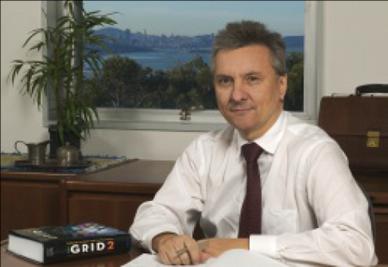Overview of Petaflop/s Projects in the U.S.

Horst D. Simon
Associate Laboratory Director, Computing Sciences, Director, National Energy Research Scientific Computing (NERSC) Center, and Computational Research Division, Lawrence Berkeley National Laboratory, Berkeley, California.
<Abstract>
Within the last few years we have seen remarkable progress in real applications performance on new HPC platforms. In 2002, computational scientists for the first time achieved a performance of more than 10 Tflop/s on the Earth Simulator, and in 2005, more than 100 Tflop/s speed was reached on BG/L. Expectations are high that 1 Petaflop/s performance can be reached within a few years, and many projects, vendors, and applications scientists have set their sights on the goal to be the first to reach Petaflop/s performance. In this talk I will first give a short overview of what it means to reach "petaflop/s" performance, and present some of the technical challenges that need to be overcome in order to make Petaflop/s computing routine. Then, I will survey petaflop/s projects in the U.S. The DARPA HPCS project and its goals for usable petaflop/s performance are well known. In addition, just recently, several other agencies have declared their own petaflop/s programs. For example, DOE-Office of Science has announced its Leadership Computing Program, and the NSF is planning a large solicitation for a Petascale project. DOE-NNSA with the ASC program, DoD, and NASA all continue their HPC programs with substantial hardware investments that will lead to petaflop/s performance as well.
<Biographical Notes>
Present
Associate Laboratory Director, Computing Sciences, Division Director, National Energy Research Scientific Computing (NERSC) Center, and Computational Research Division at Lawrence Berkeley National Laboratory, Berkeley, California
Education
1978 Diploma in Mathematik, Technische Universit?t, Berlin
1982 Ph.D., Mathematics, University of California, Berkeley
Professional/Academic Career
1982 - 1983 Assistant Professor, Department of Applied Mathematics
State University of New York (SUNY), Stony Brook
Boeing Computer Services
1983 - 1986 Technical Staff Member, Computational Mathematics Group, Seattle, Washington
1986 - 1987 Manager, Computational Mathematics, Bellevue, Washington
1983 - 1989 Manager, Research Department and Boeing Technical Marketing Manager, Moffett Field, California
Computer Sciences Corporation
1989 - 1994 Contract to Numerical Aerodynamic Simulation (NAS) at NASA Ames Research Center, Moffett Field, California
Manager, Research Department
1994 - 1996 Silicon Graphics, Inc., Mountain View, California, Manager of Research Marketing Development
Lawrence Berkeley National Laboratory, Berkeley, California
1996 to Present Division Director of the National Energy Research Scientific Computing (NERSC) Center
2002 to Present Division Director of the Computational Research Division
2004 to Present Associate Laboratory Director for Computing Sciences
Selected Awards
1988 Gordon Bell Prize (jointly with group from Cray and Boeing) in recognition of superior effort in parallel processing research.
1995 H. Julian Allen Award (jointly with the NAS Parallel Benchmarks Team) for notable scientific papers written by authors at NASA Ames Research Center, for the NAS Parallel Benchmarks.
Horstfs research interests are in the development of sparse matrix algorithms, algorithms for large-scale eigenvalue problems, and domain decomposition algorithms for unstructured domains for parallel processing. His recursive spectral bisection algorithm is regarded as a breakthrough in parallel algorithms for unstructured computations, and his algorithm research efforts were honored with the 1988 Gordon Bell Prize for parallel processing research. Horst was member of the NASA team that developed the NAS Parallel Benchmarks, a widely used standard for evaluating the performance of massively parallel systems. He is also one of four editors of the twice-yearly gTOP500h list of the worldfs most powerful computing systems.
@